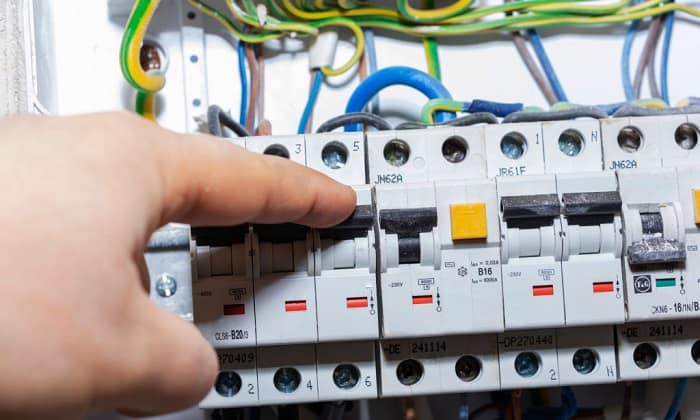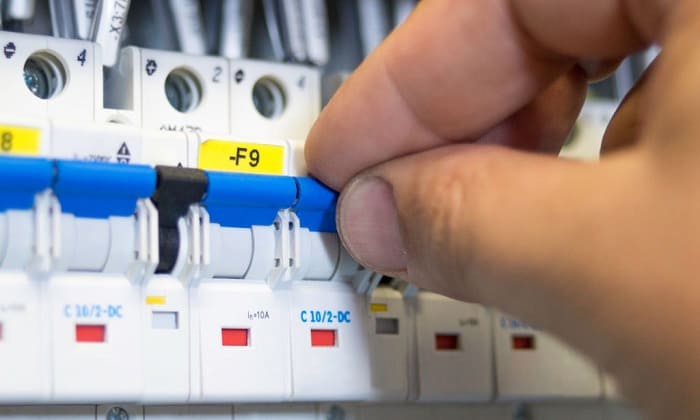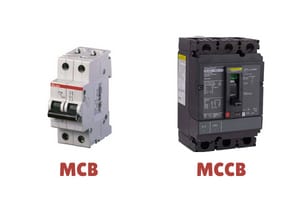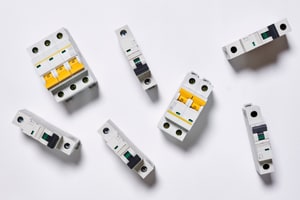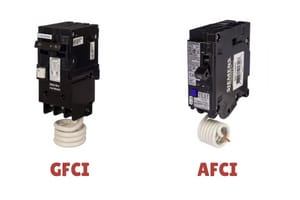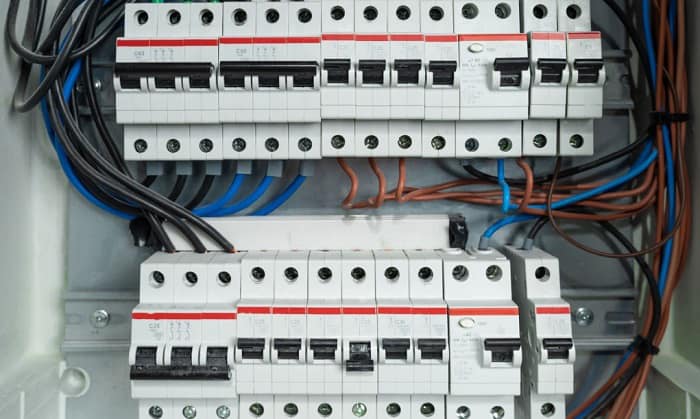If you’re wondering what is the function of circuit breaker, it largely plays a protective role for any electrical circuit. Once installed, it will be able to stay on top of issues such as electrical overloads, ground faults, and short circuits. An electrical system that doesn’t have it runs the risk of damage to not only the circuits but the appliances they’re connected to.
These risks, in turn, may lead to more serious ones like fires. I’ll explain below how a circuit breaker fulfills this function, its types, and a few more details about power circuit breakers.
Table of Contents
Types of Circuit Breakers and Their Various Tripping Mechanisms
To get the entire gist of the purpose of a circuit breaker, you only need to look at how the different circuit breakers nowadays fulfill their purposes. That being said, despite having various ways of imparting protection, they share a common denominator via their tripping mechanisms.
A circuit breaker’s function is to automatically “trip” when a short circuit, overload, or ground fault occurs. Tripping means shutting off the flow of electricity on an electrical system. This is why you won’t be able to turn an appliance on anymore once it trips. That, or it starts then shuts off after a few seconds until you address the issue and reset the breaker.
The difference between the types, especially when it comes to circuit breaker operation, lies in their interrupting mechanism. Here they are as follows:
1. Miniature Circuit Breakers (MCB) and Molded Case Circuit Breakers (MCCB)
These are special types of breakers that support various current ratings. MCBs are non-adjustable and are typically used for those with less than 100A. Most of them only provide overload protection.
MCCBs, on the other hand, support higher ratings, usually past 1,000A. Its trip settings can be adjusted, and it can provide ground fault protection besides safeguarding the circuit. They can be either electromagnetic/electromechanical or electrical/microprocessor-run.
You’ll be able to see how most modern circuit breaker protection works by observing the trip mechanism of today’s MCCBs. For one, electromechanical MCCBs use both thermal and magnetic elements to provide protection. They’re heat sensitive and incorporate an electromagnetic feature at the same time, both of which work at the same time to trigger a tripping mechanism.
The more advanced electrical or microprocessor-run MCCBs take things further by having their own sensors that provide a monitoring capability. Some even have the capacity to correct the current level, foregoing the need to trip. Do take note that these breakers will trip as well and are usually guided by their built-in circuit boards.
2. Single-Pole and Double-Pole Circuit Breakers
These are arguably the most commonly used breakers in homes. These rings are truer for single-pole breakers, designed to provide dedicated protection to a single wire circuit composed of hot and neutral ones. They will trip the hot wire in the event of an overload or short circuit. These breakers don’t go past the 30-amp limit.
Their double-pole counterparts are intended more for appliances with considerably higher power draws. They can accommodate up to 200 amps, two wires at the same time, and look like two single-pole circuit breakers meshed together. They stand out with their switch’s design, which overlaps the two poles. They share the same tripping mechanism with single-pole breakers.
3. Ground Fault Interrupters (GFCI) and Arc Fault Interrupters (AFCI)
As their name readily implies, GFCIs are more concerned with protecting people and appliances from ground faults that may cause electrocution, shock, and fires.
You’ll find GFCI outlets mostly in places with a constant presence of water and moisture like bathrooms and swimming pools where dangerous grounds may occur. They trip once they notice a change in the electrical current in the circuit as a result of any kind of interruption in the areas they’re installed. They’re convenient in that you can reset them on the actual outlet.
Conversely, an AFCI is also another highly specialized breaker that detects and prevents the damage done by arc faults. Arcing is characterized by sparks that happen as a result of loose connections, faulty appliances, and damaged wiring. AFCIs are designed for that specific purpose because the typical circuit breaker and GFCI can’t handle these faults. See a more detailed comparison between Single Pole and Double Pole here.
What Are the Basic Parts of a Circuit Breaker
I can’t consider this topic of circuit breakers explained completely, without diving into how these components function and interact with one another. Despite the various types of circuit breakers outlined above, know that the parts of a circuit breaker are pretty much uniform in most devices. Since we’re talking about the basics, I’ll leave out the other special parts included in more sophisticated breakers like MCCBs or those that include ground fault protection.
- Tripping or Protective Mechanism – also known as the trip unit, this triggers the operating mechanism once an electrical fault happens.
- Operating Mechanism – connected to the tripping mechanism, the operating mechanism seamlessly opens or shuts the breaker to fulfill its protective role.
- Molded Frame – this refers to the outer protective and supportive case of most breakers. It shelters every other component of the breaker, besides providing insulation.
- Arc Chutes – prevents damage and mostly heat from intervening with the circuit breaker’s functionality. They’re situated near the contacts, which move apart when a fault occurs that, in turn, produces an arc. The metallic, ferromagnetic part of the chutes attracts this arc, increasing its length to the point that it cools down.
- Contacts – mostly ensure optimal airflow inside the breaker. These can be further subdivided into arcing, auxiliary, or main contacts, which fulfill various purposes like transferring the arc in the arc chut, making and breaking the control circuits, and carrying the primary current, respectively.
Do you want a more visual reference of a circuit breaker working in real time? This neat video demonstrates it in slow-motion, so I highly recommend you to watch it:
Conclusion
So what does a circuit breaker do or what is the function of circuit breaker? Summed up, it keeps track of the most common electrical issues and trips once they occur. It’s that simple, really. Nonetheless, as you’ve probably learned by now, this is only made possible by the intricate design of this truly nifty, invaluable device for ensuring the safety of any kind of residence, office, or industrial complex.

I am Edwin Jones, in charge of designing content for Galvinpower. I aspire to use my experiences in marketing to create reliable and necessary information to help our readers. It has been fun to work with Andrew and apply his incredible knowledge to our content.

